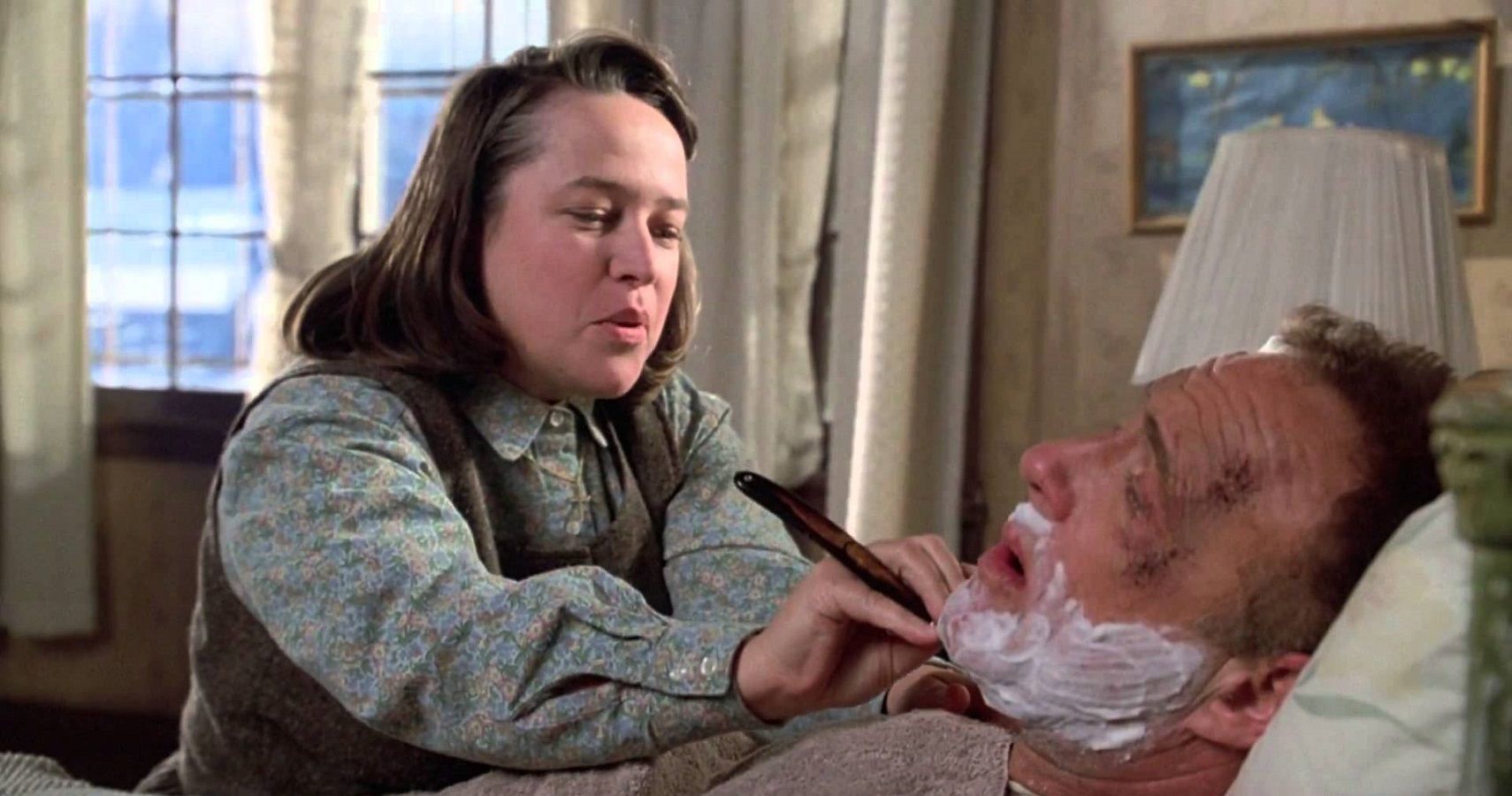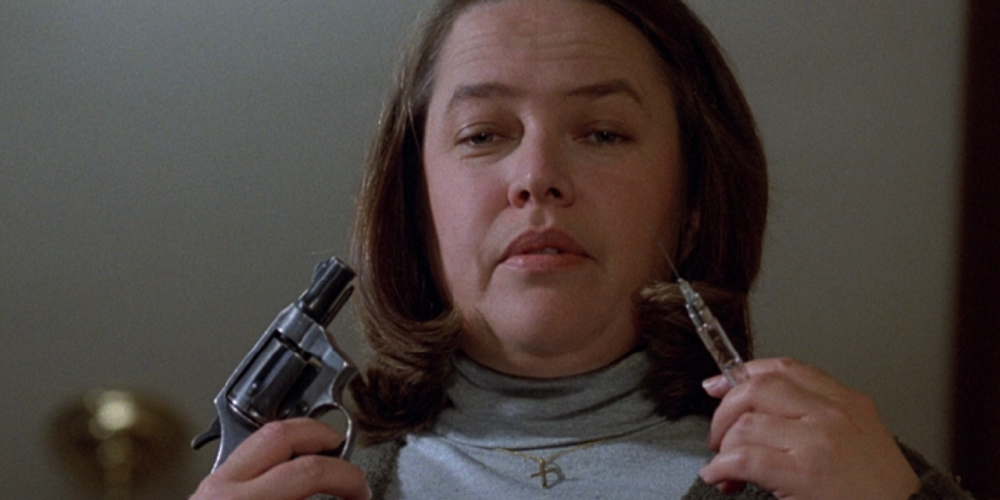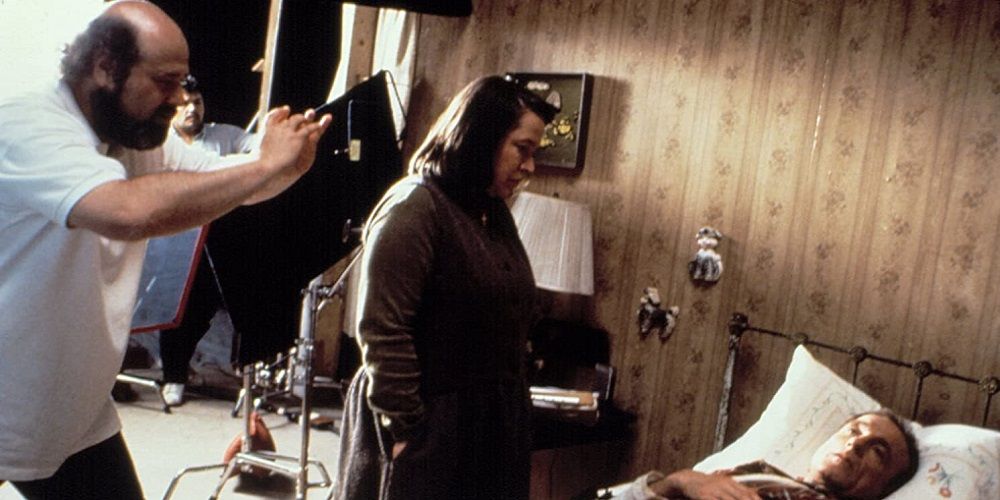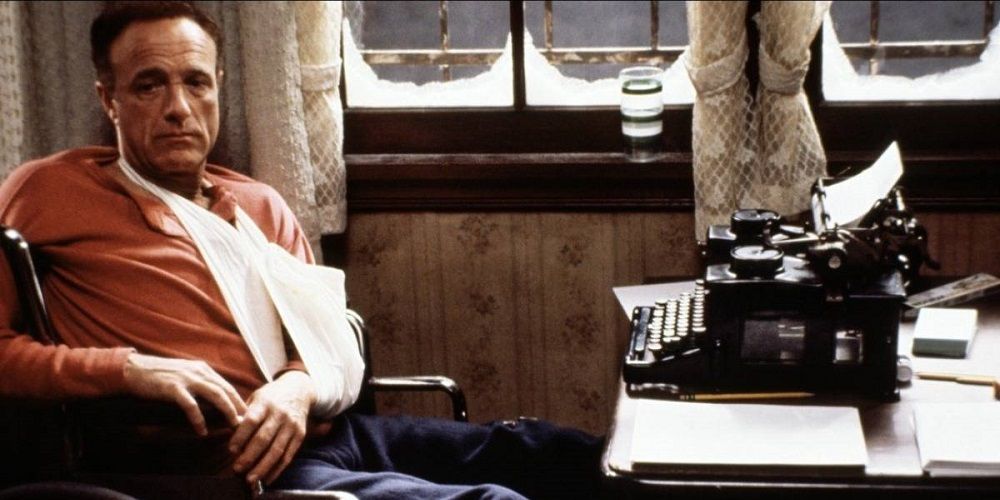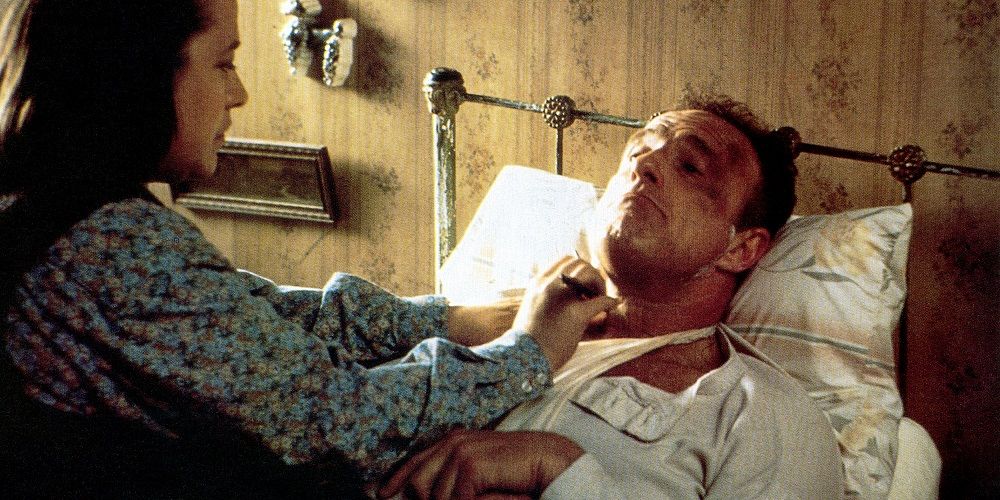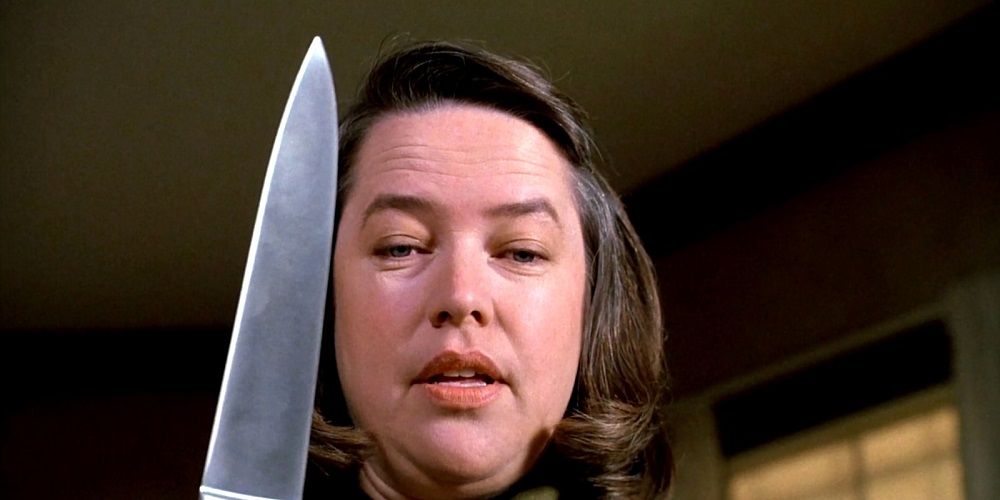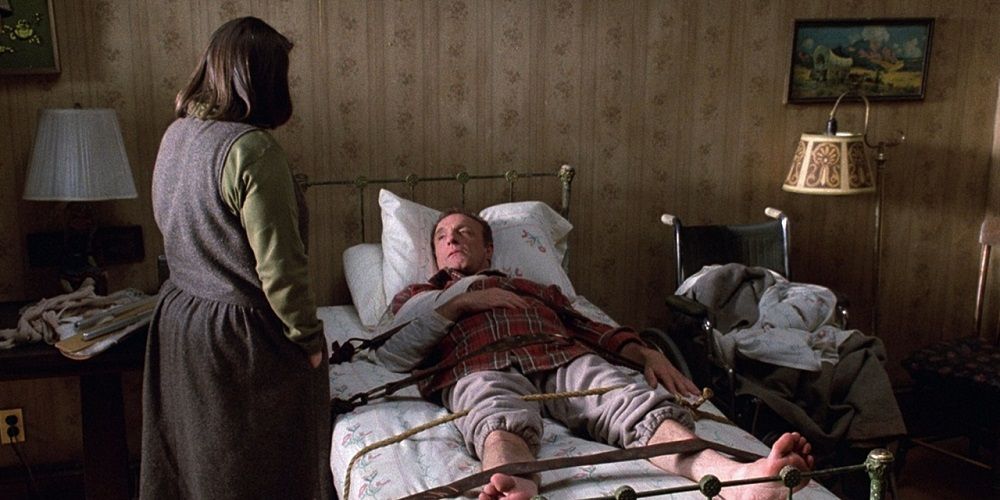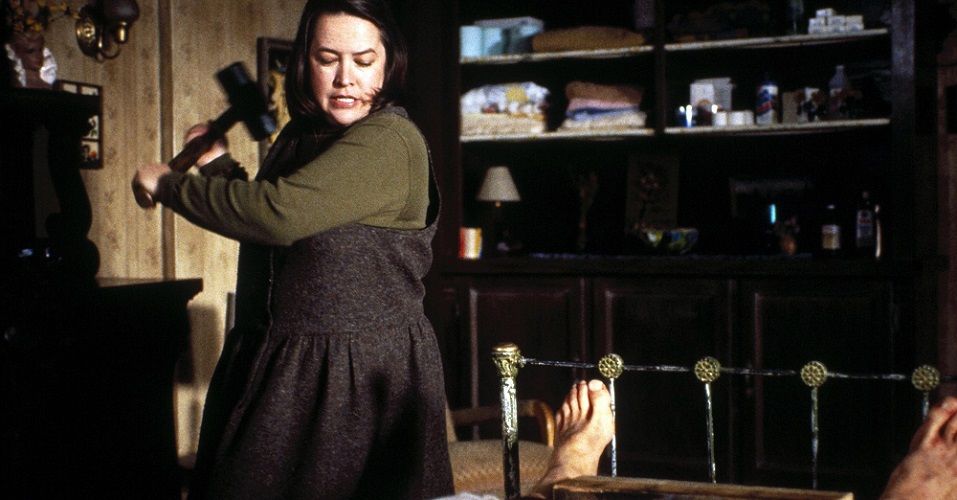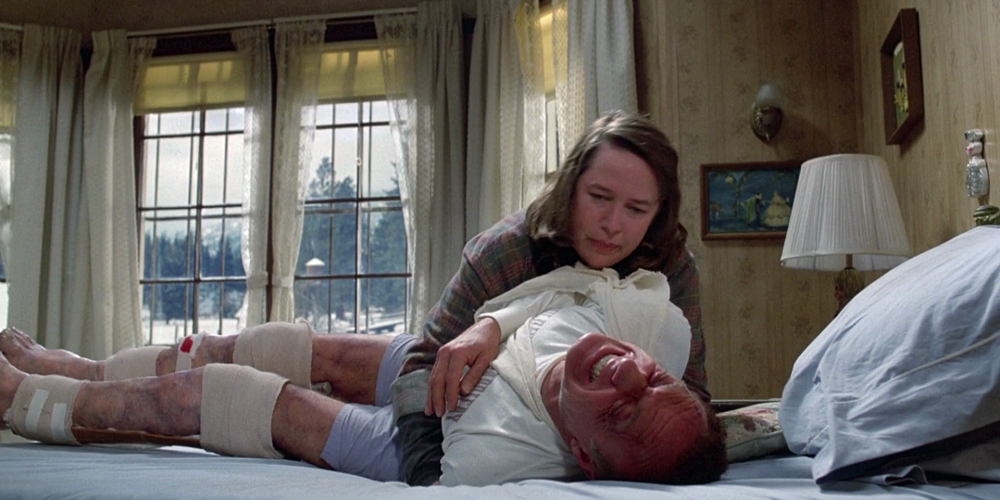Rob Reiner's Misery is largely hailed as one of the all-time best Stephen King horror film adaptations. The film currently boasts a 90% Rotten Tomatoes score, a 7.8/10 IMDB rating, and a 75/100 Metascore. In addition, the film earned star Kathy Bates an Academy Award for Best Leading Actress, marking the first time a woman won such an award for a horror movie.
Also starring James Caan, Richard Farnsworth, Lauren Bacall, and Frances Sternhagen, Misery tells the story of famed romance novelist Paul Sheldon (Caan), who suffers a car accident in the snowy woods of Colorado. Rescued and nursed by a woman named Annie Wilkes (Bates), Paul soon learns his so-called biggest fan is a sadistic psycho murderer. As the film nears its 30th anniversary this fall, here are 9 behind-the-scenes facts about the Making of Misery.
King's Inspiration
After decades of refusing to admit the inspiration behind Misery, Stephen King finally came out and confessed that the movie is a thinly veiled allegory for his history of drug abuse.
Annie Wilkes is the physical manifestation of the toll drugs had been taking on King's body during the 1970s and 1980s. While on drugs, King felt isolated and alone, just like Paul Sheldon is in the film. King noted that he was not ready to confront this reality at the time of the film's release, and thought it would diminish the story if he did.
King's Blessing
Initially, King balked at the notion of Hollywood adapting Misery. Afraid the major studios would not honor his original vision, King finally agreed to option the film under one condition.
After seeing Stand By Me, adapted from King's short story The Body, King was impressed by the filmmaking skill of director Rob Reiner. King agreed to have Misery adapted as a film so long as Rob Reiner either produced or directed through his Castlerock Entertainment production company.
Casting Paul Sheldon
Prior to casting James Caan in the central role of Paul Sheldon, nearly every major movie star was offered the role. According to screenwriter William Goldman in his book Four Screenplays, everyone from Warren Beatty, Jack Nicholson, Robert De Niro, Harrison Ford, Mel Gibson, Robert Redford, Dustin Hoffman, Al Pacino, Denzel Washington, and Bruce Willis was approached to play Sheldon.
Other potential candidates for the role included William Hurt, Morgan Freeman, Gene Hackman, Kevin Kline, and others. Warren Beatty helped develop the script, while Willis would go on to play Sheldon on Broadway.
Drunken Reshoots
One day during filming, lead actor James Caan showed up to set completely hungover from the night before. He filmed a full day's worth of scenes, which ended up being unusable due to his condition.
Rather than confront or alienate his leading man, Rob Reiner told Caan that there was a problem developing the film at the lab and that he had to redo the scenes. Caan soon learned that the reshoots had nothing to do with a lab error, and offered to pay the studio the cost of reshooting the scene.
Acting Methods
The acting methods between the two lead actors were so diametrically opposed that they clashed while filming the movie. In the end, methods helped establish the onscreen tension between Annie and Paul.
James Caan believed in little rehearsal in order to retain spontaneity in the scene. As a longtime theater actress, Bates preferred long rehearsal periods prior to filming. Bates confronted Reiner by telling him Caan wasn't listening to her or reacting very much during the scene. Reiner told her to use her anger on the character instead.
Deleted Scene
While there are many differences between the film and novel versions of Misery, one scene was shot for the film and deleted, much to the chagrin of Kathy Bates.
The scene entailed Wilkes accosting a young police officer patrolling her property. Taking place at the height of her violent eruption, Wilkes pulverizes the officer by repeatedly running him over with a lawnmower. Reiner ultimately opted to cut the scene for fear that audiences would find it too over the top and burst into laughter.
James Caan's Performance
For his performance, James Caan was confined to a bed for roughly 15 weeks of filming. He thought Reiner was playing a sick joke on him at first, as he did not read the novel prior to production. He also didn't believe Reiner would have the patience to stay in one location for so long.
During the scene in which Sheldon crawls out of bed, director of photography Barry Sonnenfeld spat on the floor to show Caan where to go. Although he was not Reiner's first choice for the role, he publicly stated he couldn't imagine anyone else playing the role.
Paul's Prosthetic Legs
The most iconic scene in Misery features Annie bashing Paul's ankles in bed with a large sledgehammer. For the shot, Paul's legs were molded out of pliable gelatin.
In addition, wires were rigged to ligatures in the ankles so that when it was struck by the hammer, they could bend and contort at the grisliest angles imaginable. Holes were punctured into the gelatin casts at the knees so Caan could slip his real legs in and out with ease.
Kathy Bates
It was screenwriter William Goldman who suggested Kathy Bates play Annie Wilkes in the film. However, prior to being officially cast, other actresses up for the role included Jessica Lange, Barbara Streisand, Mary Tyler Moore, Vicky Lawrence, Roseanne Barr, Rosie O'Donnell, and more.
Despite having difficulty with the violence in the film, Bates went on to win an Oscar for Best Leading Actress for her performance in Misery. King was so impressed by her work that he tailor-made two subsequent roles for her to play. King wrote the novel, Dolores Claiborne, with Bates in mind, who went on to star in the film version. Also, when King learned Bates had been attached to miniseries based on his novel The Stand, he rewrote the male character of Ray to be a female named Rae for Bates to play.

